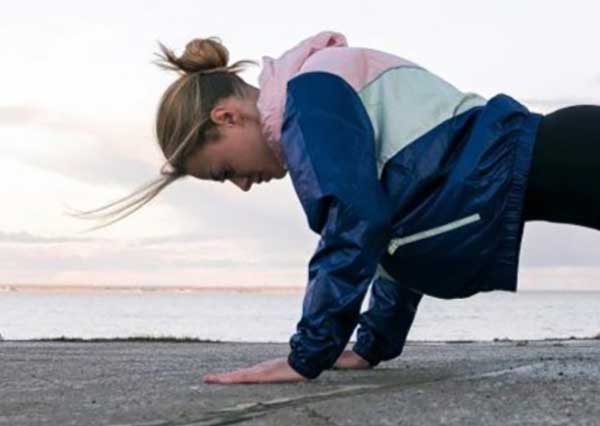
On Your Mark…
Yesterday’s blog post was all about gearing up for training. Now that you’ve got your gear in place, you need to decide on a training plan! We want to make sure that it includes SMART goals (Specific, Measurable, Attainable, Relevant, Time-Based)
Here’s the thing, if you’ve never run a day in your life, don’t expect to be able to run 3 miles the first time you put on those new shoes! Depending on your cardiovascular strength and capacity, it could take you up to 9 or 10 weeks of training to be able to run 3 miles without needing to catch your breath and walk. (If you find yourself needing to slow down on race day, that’s totally fine!)
Your first week of training will determine how the rest of your training proceeds. If you are completely new to running, aim for 3 one-mile sessions (a mixture of running and walking) followed by a fourth run that is a timed session. You will probably spend a couple of weeks here until you can comfortably run a mile without stopping, then increase your distance by ½ mile for about 2 weeks. In week 6-7, you should be working on 2 mile runs. And finally, the last weeks before the race you should build up to 3 miles.
There are several apps available that will cue you when to walk and when to run, but they aren’t necessary. You can simply use the fitness tracker on your phone. If you really want to finish your 5k strong, train for running 3.5 miles comfortably. When you hit that 3.1 mark you will still have some gas and feel great crossing that finish line!
SMART Goals

Here’s the thing, if you’ve never run a day in your life, don’t expect to be able to run 3 miles the first time you put on those new shoes! Depending on your cardiovascular strength and capacity, it could take you up to 9 or 10 weeks of training to be able to run 3 miles without needing to catch your breath and walk. (If you find yourself needing to slow down on race day, that’s totally fine!)
Your first week of training will determine how the rest of your training proceeds. If you are completely new to running, aim for 3 one-mile sessions (a mixture of running and walking) followed by a fourth run that is a timed session. You will probably spend a couple of weeks here until you can comfortably run a mile without stopping, then increase your distance by ½ mile for about 2 weeks. In week 6-7, you should be working on 2 mile runs. And finally, the last weeks before the race you should build up to 3 miles.
There are several apps available that will cue you when to walk and when to run, but they aren’t necessary. You can simply use the fitness tracker on your phone. If you really want to finish your 5k strong, train for running 3.5 miles comfortably. When you hit that 3.1 mark you will still have some gas and feel great crossing that finish line!
Cross-Training

Now that you have a strategy in place for building your stamina and increasing your distance, don’t forget to cross train!
A lot of times when we start a new activity (especially fitness!), we get laser focused and forget there is anything else. Doing too much, too soon or even working the same muscle groups the same way over and over can result in unnecessary soreness or even injury. And that is where cross-training comes in.
Some of the activities you can use for cross training are swimming, cycling, strength training and even yoga. If training 4-5 days a week seems insurmountable, you could even substitute a 30-minute run with a cross training session. Cross training will help prevent injury and muscle over-use, plus you will improve strength and endurance.
Eating for success

In order to be as successful as possible, you need to have a nutrition plan. (You knew I was going there, didn’t you?)
With the increased levels of activity and new demands on your body, it is important that the fuel you provide your body is clean and usable! This means cutting out processed foods, added sugars and junk! Your body will need a balance diet of healthy vegetables, fruit, fat, complex carbs and protein. Eating REAL FOOD will ensure you have the ingredients needed to build muscle, produce energy and make needed repairs.
When you eat is just as important as what you eat. There is nothing worse than being in the middle of a workout and not having the energy to finish strong! Here is where a pre-workout snack comes in handy (no, I am not talking about a pre-workout supplement). Having a banana or a whole-food smoothie before a workout will give you the extra energy you need to not be exhausted mid-run.
Once you crush that workout, you are going to need a little extra protein to allow your body to help repair and rebuild muscle. The kind of protein you have is pretty important! Because digestion is expensive energy-wise, your protein source should be as easily digestible as possible.
That is why I like Sunwarrior Warrior Blend plant-based protein powder. (Yes, this is an affiliate link. Using it to purchase any Sunwarrior product gives me a small commission. Even without an affiliate agreement, I would still use and recommend Sunwarrior!)
Make sure your protein powder is free from added sugars, and unnecessary ingredients. Because your body breaks every protein into the amino acid needed, a protein supplement with branch chain amino acids are better than whole proteins.
Another important piece of advice is don’t eat a large meal before a run! As I mentioned above, digestion is pretty expensive! You don’t want your energy to be divided between running or digesting. Your body will choose running and you might end up getting rid of that big meal one way or another.
Listen to your body
Throughout this entire process – and even on race day – listen to your body!
If you are anything like me, you want to “power through” cramps, shin splints or other twinges. Unfortunately, that could lead to stress fractures, muscle tears or other injury that could prevent you from continuing your training or finishing your race.

When you feel discomfort, take the time to check in and mentally assess what is going on.
- Am I going to fast?
- Did I not take the time to warm up?
- Is the terrain sloping one way or another?
- On race day, is it nerves?
- Am I not breathing properly?
- How is my form?
Once you’ve completed your assessment, take action to prevent injury – even if that means taking the day off from training or finishing the race at a walk.
The last piece of advice I can offer is HAVE FUN!!
Remember that your body was designed for MOVEMENT not IMMOBILITY.
Pay attention to and celebrate the improvements you are seeing throughout your training sessions –
- Lung capacity
- endurance
- speed
- strength
Appreciate what your body is able to do and accomplish!
Have you signed up for your race yet? What are you waiting for??
If the race in your area had been delayed or cancelled or if you are unable to find one happening around the first week of September, run the Beneeezy Purple Monkey Fun Run with me! Being held virtually, “Race Day” would be any time or day around September 5th.
Let’s train (virtually) together and share our progress in The Emerging Tribe!
Read about the benefits of a training partner here
(this links to Better Together blog post)


